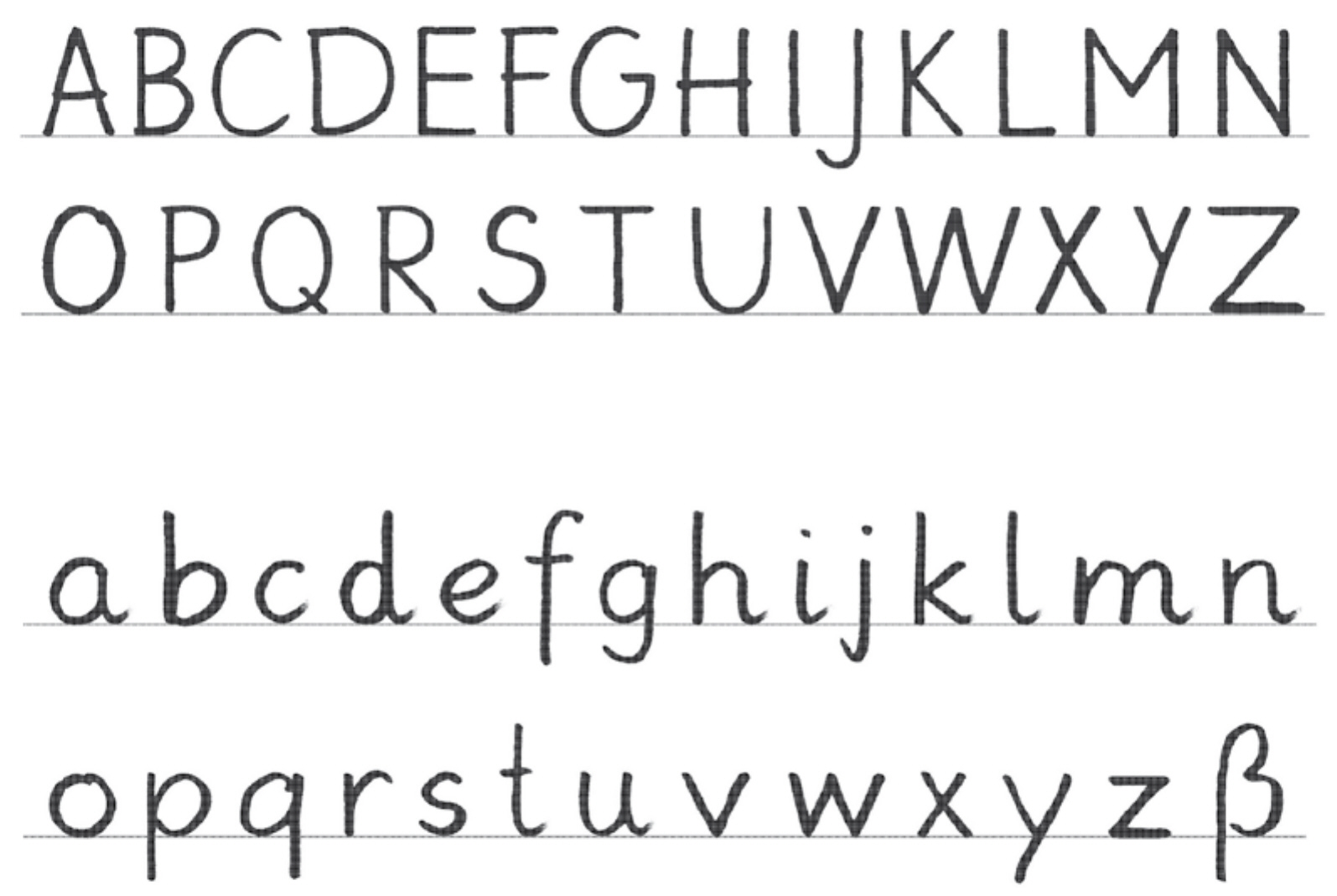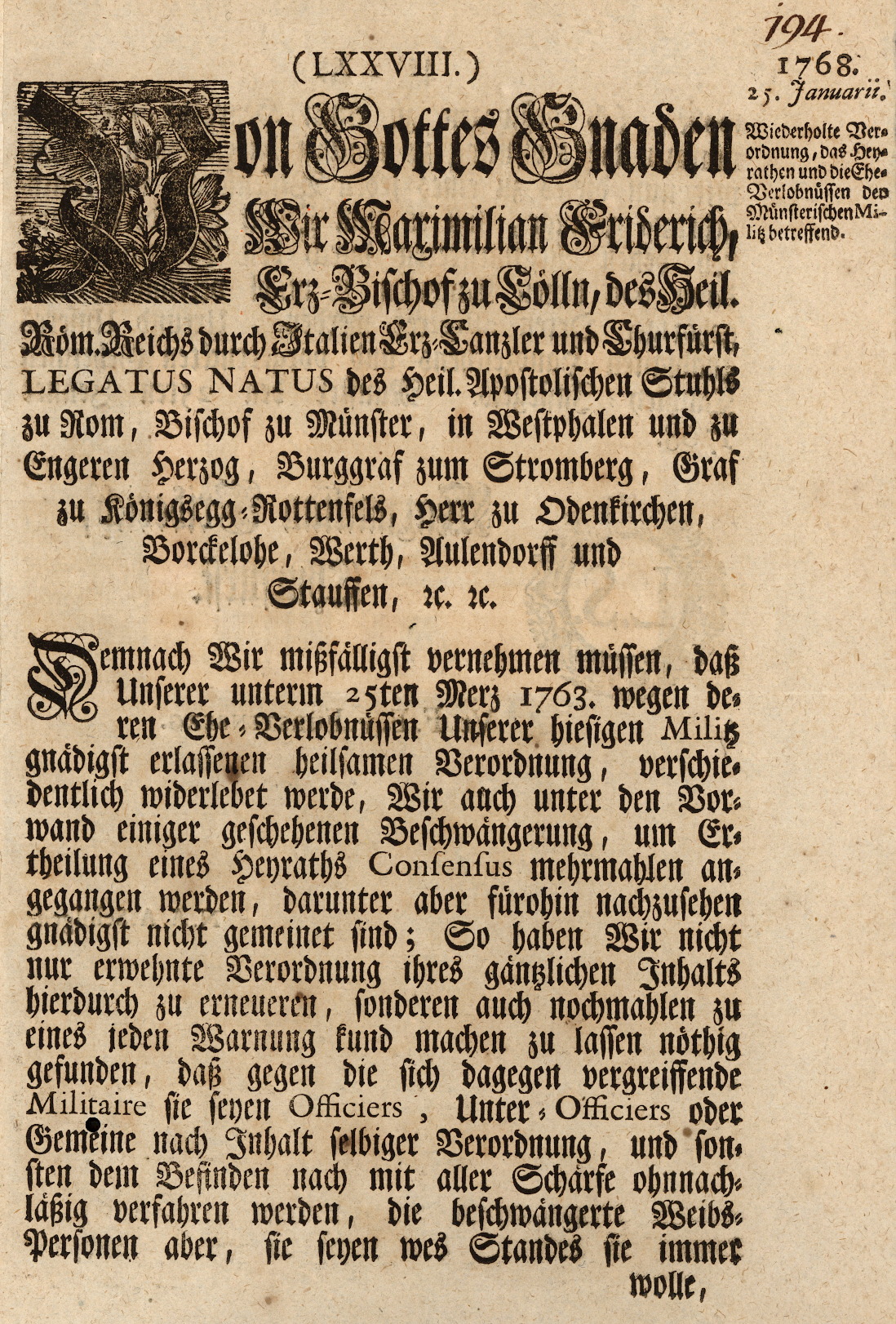|
Kurrent
() is an old form of German-language handwriting based on late medieval cursive writing, also known as ("cursive script"), ("German script") and ''German cursive''. Over the history of its use into the first part of the 20th century, many individual letters acquired variant forms. German writers used both cursive styles, and Latin cursive, in parallel: location, contents, and context of the text determined which script style to use. is a modern script based on that is characterized by simplified letters and vertical strokes. It was developed in 1911 and taught in all German schools as the primary script from 1935 until the beginning of January 1941. Then it was replaced with ("normal German handwriting"), which is sometimes referred to as "Latin writing". Lettering examples File:Lessing Kleist-Brief.jpg, Letter from Lessing to Kleist, 14 March 1758 File:Schein und Sein.jpg, Manuscript by Wilhelm Busch (undated, late 19th century) File:Bielsko-Biała Teatr Polski ... [...More Info...] [...Related Items...] OR: [Wikipedia] [Google] [Baidu] |
Deutsche Kurrentschrift
Deutsch or Deutsche may refer to: *''Deutsch'' or ''(das) Deutsche'': the German language, in Germany and other places *''Deutsche'': Germans, as a weak masculine, feminine or plural demonym *Deutsch (word), originally referring to the Germanic vernaculars of the Early Middle Ages Businesses and organisations *André Deutsch, an imprint of Carlton Publishing Group *Deutsch Inc., a former American advertising agency that split in 2020 into: ** Deutsch NY, a New York City-based advertising agency * Deutsche Aerospace AG *Deutsche Akademie, a cultural organisation, superseded by the Goethe-Institut *Deutsche Bahn, the German railway service *Deutsche Bank *Deutsche Börse, a German stock exchange * Deutsche Geophysikalische Gesellschaft, the German Geophysical Society *Deutsche Grammophon, a German classical music record label *Deutsch Group, an international connector manufacturer *Deutsche Luft Hansa (1926–1945) * Deutsche Lufthansa (since 1953), an airline * Deutsche Marine, ... [...More Info...] [...Related Items...] OR: [Wikipedia] [Google] [Baidu] |
George II Of Great Britain
George II (George Augustus; german: link=no, Georg August; 30 October / 9 November 1683 – 25 October 1760) was King of Great Britain and Ireland, Duke of Brunswick-Lüneburg ( Hanover) and a prince-elector of the Holy Roman Empire from 11 June 1727 ( O.S.) until his death in 1760. Born and brought up in northern Germany, George is the most recent British monarch born outside Great Britain. The Act of Settlement 1701 and the Acts of Union 1707 positioned his grandmother, Sophia of Hanover, and her Protestant descendants to inherit the British throne. After the deaths of Sophia and Anne, Queen of Great Britain, in 1714, his father, the Elector of Hanover, became George I of Great Britain. In the first years of his father's reign as king, George was associated with opposition politicians until they rejoined the governing party in 1720. As king from 1727, George exercised little control over British domestic policy, which was largely controlled by the Parliament of Great Br ... [...More Info...] [...Related Items...] OR: [Wikipedia] [Google] [Baidu] |
Palaeography
Palaeography ( UK) or paleography ( US; ultimately from grc-gre, , ''palaiós'', "old", and , ''gráphein'', "to write") is the study of historic writing systems and the deciphering and dating of historical manuscripts, including the analysis of historic handwriting. It is concerned with the forms and processes of writing; not the textual content of documents. Included in the discipline is the practice of deciphering, reading, and dating manuscripts, and the cultural context of writing, including the methods with which writing and books were produced, and the history of scriptoria. The discipline is one of the auxiliary sciences of history. It is important for understanding, authenticating, and dating historic texts. However, it generally cannot be used to pinpoint dates with high precision. Application Palaeography can be an essential skill for historians and philologists, as it tackles two main difficulties. First, since the style of a single alphabet in each given la ... [...More Info...] [...Related Items...] OR: [Wikipedia] [Google] [Baidu] |
German Orthography
German orthography is the orthography used in writing the German language, which is largely phonemic. However, it shows many instances of spellings that are historic or analogous to other spellings rather than phonemic. The pronunciation of almost every word can be derived from its spelling once the spelling rules are known, but the opposite is not generally the case. Today, Standard High German orthography is regulated by the (Council for German Orthography), composed of representatives from most German-speaking countries. Alphabet The modern German alphabet consists of the twenty-six letters of the ISO basic Latin alphabet plus four special letters. Basic alphabet 1in Germany 2in Austria Special letters German has four special letters; three are vowels accented with an umlaut () and one is a ligature of and (; called "ess-zed/zee" or "sharp s"), all of which are officially considered distinct letters of the alphabet, and have their own names separat ... [...More Info...] [...Related Items...] OR: [Wikipedia] [Google] [Baidu] |
Grundschrift
Grundschrift (''base font'', literally ''ground script'') is a simplified form of handwriting adopted by Hamburg schools, and it is currently endorsed by the German National Primary Schoolteachers' Union. If nationally adopted, it would replace the three different German cursives currently being taught in schools: the Lateinische Ausgangsschrift (introduced in 1953), the Schulausgangsschrift (1968), and the Vereinfachte Ausgangsschrift (1969), providing a standardized system of handwriting in German school systems. Grundschrift letters are written separately as block letters as opposed to cursive script, in which letters are conjoined together in a flowing motion. See also * Kurrent * Sütterlin (, " script") is the last widely used form of , the historical form of German handwriting that evolved alongside German blackletter (most notably ') typefaces. Graphic artist Ludwig Sütterlin was commissioned by the Prussian Ministry of Scienc ... References {{European ca ... [...More Info...] [...Related Items...] OR: [Wikipedia] [Google] [Baidu] |
Fraktur (script)
Fraktur () is a calligraphic hand of the Latin alphabet and any of several blackletter typefaces derived from this hand. The blackletter lines are broken up; that is, their forms contain many angles when compared to the curves of the Antiqua (common) typefaces modeled after antique Roman square capitals and Carolingian minuscule. From this, Fraktur is sometimes contrasted with the "Latin alphabet" in northern European texts, which is sometimes called the "German alphabet", simply being a typeface of the Latin alphabet. Similarly, the term "Fraktur" or "Gothic" is sometimes applied to ''all'' of the blackletter typefaces (known in German as , "Broken Script"). The word derives from Latin ("a break"), built from , passive participle of ("to break"), the same root as the English word "fracture". Characteristics Besides the 26 letters of the ISO basic Latin alphabet, Fraktur includes the ( ), vowels with umlauts, and the (''long s''). Some Fraktur typefaces also include a ... [...More Info...] [...Related Items...] OR: [Wikipedia] [Google] [Baidu] |
Blackletter
Blackletter (sometimes black letter), also known as Gothic script, Gothic minuscule, or Textura, was a script used throughout Western Europe from approximately 1150 until the 17th century. It continued to be commonly used for the Danish, Norwegian, and Swedish languages until the 1870s, and for the German language until the 1940s, when Hitler's distaste for the supposedly "Jewish-influenced" script saw it officially discontinued in 1941. Fraktur is a notable script of this type, and sometimes the entire group of blackletter faces is incorrectly referred to as Fraktur. Blackletter is sometimes referred to as Old English, but it is not to be confused with the Old English language, which predates blackletter by many centuries and was written in the insular script or in Futhorc. Along with Italic type and Roman type, blackletter served as one of the major typefaces in the history of Western typography. Origins Carolingian minuscule was the direct ancestor of blackletter. Blac ... [...More Info...] [...Related Items...] OR: [Wikipedia] [Google] [Baidu] |
Antiqua–Fraktur Dispute
The Antiqua–Fraktur dispute was a typographical dispute in 19th- and early 20th-century Germany. In most European countries, blackletter typefaces like the German Fraktur were displaced with the creation of the Antiqua typefaces in the 15th and 16th centuries. However, in Germany and Austria, both fonts coexisted until the first half of the 20th century. During that time, both typefaces gained ideological connotations in Germany, which led to long and heated disputes on what was the "correct" typeface to use. The eventual outcome was that the Antiqua-type fonts won when the Nazi Party chose to phase out the more ornate-looking Fraktur. Origin Historically, the dispute originates in the differing use of these two typefaces in most intellectual texts. Whereas Fraktur was preferred for works written in German, for Latin texts, Antiqua-type typefaces were normally used. This extended even to English–German dictionaries. For example, the English words would all be written i ... [...More Info...] [...Related Items...] OR: [Wikipedia] [Google] [Baidu] |
Esslingen Am Neckar
Esslingen am Neckar ( Swabian: ''Esslenga am Neckor'') is a town in the Stuttgart Region of Baden-Württemberg in southern Germany, seat of the District of Esslingen as well as the largest town in the district. Within Baden-Württemberg it is the 11th largest city. It is located on the river Neckar, about southeast of Stuttgart city center. The regions surrounding the city of Esslingen are also mostly developed. Esslingen was a free imperial city for several centuries until it was annexed by Württemberg in 1802. The German Timber-Frame Road passes through the city. History Prehistoric times There is archaeological evidence that what is now the city of Esslingen was settled since the Neolithic period. Traces of human settlement found at the site of the city church date back to around 1000 B.C. Roman times In the 1st century AD the Esslingen region became part of the Roman Empire. During this period a Roman warehouse was located in the area of Oberesslingen. The n ... [...More Info...] [...Related Items...] OR: [Wikipedia] [Google] [Baidu] |
Wilhelm Busch
Heinrich Christian Wilhelm Busch (14 April 1832 – 9 January 1908) was a German humorist, poet, illustrator, and painter. He published wildly innovative illustrated tales that remain influential to this day. Busch drew on the tropes of folk humour as well as a profound knowledge of German literature and art to satirize contemporary life, any kind of piety, Catholicism, Philistinism, religious morality, bigotry, and moral uplift. His mastery of drawing and verse became deeply influential for future generations of comic artists and vernacular poets. Among many notable influences, '' The Katzenjammer Kids'' was inspired by Busch's '' Max and Moritz''. Today, the Wilhelm Busch Prize and the Wilhelm Busch Museum help maintain his legacy. The 175th anniversary of his birth in 2007 was celebrated throughout Germany. Busch remains one of the most influential poets and artists in Western Europe. Family background Johann Georg Kleine, Wilhelm Busch's maternal grandfather, se ... [...More Info...] [...Related Items...] OR: [Wikipedia] [Google] [Baidu] |
_und_ihre_Kinder_Georg_August_und_Sophie_Dorothea.jpg)






